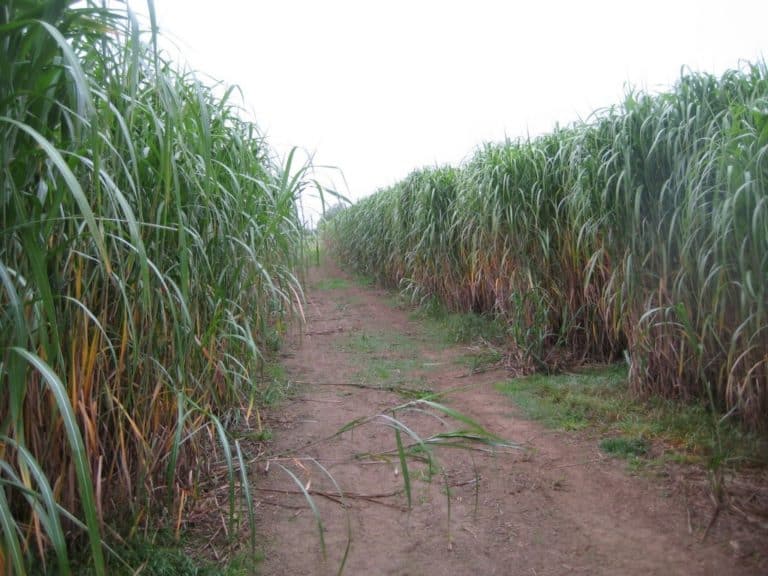Miscanthus is a woody rhizomatous C4 grass species which originated in SE Asia and was initially imported to Europe as an ornamental plant. It is a perennial plant with an estimated productive life of around 16 years. It grows to 3-4m in height and the stems and leaves can be harvested annually. It utilises the C4 photosynthetic pathway in contrast to the C3 pathway utilised by standard arable crops in Northern Europe (such as wheat, oilseed rape potatoes). As such its shows a higher irradiation conversion efficiency than C3 plants and is also more efficient in its use of nitrogen and water. It is affected by low temperatures, but is better adapted to temperate climates than most other C4 crops (such as maize).
The cost of establishing a miscanthus plantation has reduced considerably in recent years. It should be possible to prepare the land and plant the crop for around £1500 per hectare. As a general rule it is considered a viable option for farmland south of a line drawn between the Severn and the Wash. However, extensive plantings have been established in Yorkshire to fuel the Drax power station.
Miscanthus is grown as a monoculture of one variety of M x giganteus although there is a breeding programme underway at the Institute of Biological, Environmental and Rural Sciences at Aberystwyth University to increase the genetic base of the crop. There are currently no significant economic pests and diseases.
